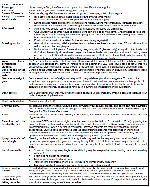The research which was planned as a randomized,
prospective and experimental-control group was performed in Manisa, Turkey between November 1, 2008
and May 1, 2009. The sample of the study included 168
pregnant women who were at a gestational age between
20 and 24 weeks and applied at the outpatient clinic in
Manisa Maternity and Child Hospital. Gestational age at
recruitment was based on the last menstrual period and
ultrasound assessment. Among the 168 pregnant
women, we found 102 to have GERD symptoms and four
women who did not agree to participate. 98 pregnant
women with GERD symtoms were included in the study.
Overall, 8 pregnant in both groups did not complete
follow-up data, thus 41 pregnant women in both groups
were available for the study (Figure
1).
The EG and CG were randomized according to
previous study results, which found the risk factors
associated with GERD symptoms: GERD symptoms
prior to pregnancy, cumulative weight gain, gestational
age, history of GERD symtoms, women’s education, age
and parity1-3,5,6.
Data were collected using the questionnaire which
consisted of four parts as follows: prenatal characteristics
questionnaire (PCQ), GERD questionnaire, Short Form-
36 (SF-36) and The Pittsburgh Sleep Quality Index
(PSQI). The first part included prenatal characteristics
questionnaire (PCQ), which evaluated the pregnant
women’s socio-demographic and reproductive
characteristics, including age, education level, health
insurance, employment status, parity, and body mass
index (BMI).
The second part included GERD questionnaire which
was developed by Locke et al.18 and adapted for the
Turkish population by Kitapcıoglu et al.19 in 2004. It was previously defined by Locke et al that the group with
frequent symptoms defined as heartburn and/or
regurgitation occurring at least once a week or common,
was accepted as having GERD. The group with
occasional symptoms was defined of an episode of one
of the major symptoms less than once a week during the
pregnancy. We evaluated also the GERD cardinal
symptoms in the last visit of women18,19.
Thirdly, health-related QoL was measured using the
Short Form-36 (SF-36) which was validated by Koçyiğit
et al.20. The form includes 36 items, is based on a 5-
point scale and eight dimensions as follows: physical
function, social function, role limitations (physical and
emotional), mental health, vitality, pain and general
health perception. Higher scores indicated better
functioning or well-being20.
Lastly, SQ was assessed using The Pittsburgh Sleep
Quality Index (PSQI) which was validated by Buysse et
al in 1989 and the validity and reliability of the PSQI Turkish version was made by Agargun et al.21 in 1996.
PSQI measures quality and patterns of sleep with 19
individual items which generate seven “component”
scores: subjective sleep quality, sleep latency, sleep
duration, habitual sleep efficiency, sleep disturbances,
use of sleeping medication, and daytime dysfunction.
The sum of seven components yields one global score. A
global PSQI score of 5 or greater indicate “poor” SQ21,22.
The research purpose was explained to the pregnant
women in the hospital. The researcher interviewed
pregnant women who agreed to participate in this
research at their homes by face-to face interview. After
formal permission was obtained the data were collected
from CG in two stages and from the EG in three stages.
In the first stage PCQ, GERD questionnaire, SF-36 and
PSQI were measured. The pregnant women in the CG
received standard nursing care by health institution and
after four weeks a researcher visited these pregnant
women at their home and GERD symptoms, QoL and
PSQI were evaluated again.
Pregnant women in EG were visited by a researcher
at their home and the researcher applied “education
about diet and lifestyle measures for pregnants with
GERD” which was prepared using the available literature23-28 (Table 1). After four weeks the researcher visited
the pregnant women in EG at their home again and
GERD symptoms, QoL and SQ were evaluated again. At
the end of the study, education was given to the CG.
The study was approved by the Ege University Ethic
Committee of Nursing in Izmir. Each pregnant woman
was informed about the study and gave a written consent
to participate.
The primary outcome variables were GERD
symptoms, QoL and SQ were evaluated two times. We
compared socio-demographic and some variable which
could affect GERD symptoms between CG and EG using
χ² statistics. We compared the QoL and PSQI scores by
using the t-test. Two sided p values less than 0.05 were
considered to be significant








